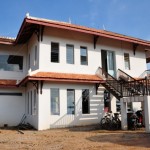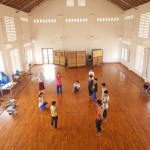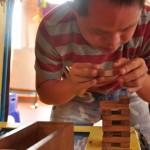(Pari Project Guest Post) Pick the Right People, then Build Them Up
This is a guest post by Allie Hoffman of The Pari Project.
—-
In the private sector, picking the right people to work for your business is not only an approach, it is a sacred strategy. Extensive resources go into personality tests, interview questionnaires, highly paid consultants and entire HR departments to deal with attracting, hiring and retaining talent.
Yet after six years working in the development sector in Cambodia, Pari has witnessed many, many organizations make the fatal but depressingly common mistake of blatantly ignoring their team and its development. We’ve spent time in many organizations without job descriptions, performance reviews, or clear recruitment processes. We’ve talked to staff who have never been asked for their feedback, and who don’t know where to take their grievances.
Developing countries struggle enormously to develop and retain talent; there are more African doctors working in America than there are working in Africa. Under these circumstances, you’d think the development organizations tasked with building society would value people above all. But it’s rarely the case.
Why the paradox? Building an empowered, innovative, ambitious and motivated workforce calls for an intensive investment of time in people. Often organizations are not able to, cannot or are unwilling to make this investment in the short-term, and as a result the stability, growth and ‘greatness’ of their organization suffers enormously in the long-term.
Management guru Jim Collins takes it one step further when talking about what it means to go from a ‘good’ organization to a ‘great’ organization: “First get the right people on the bus (and the wrong people off the bus) before you figure out where to drive it. The ‘who’ questions should come before the ‘what’ decisions – before vision, before strategy, before organizational structure, before tactics. First who, then what.”
I often note that HR is the hardest part of my job, and my team is relatively small at 15. Searching for an intangible set of characteristics in a person is never easy, and relentlessly developing, empowering and challenging them once they’re on board is a much greater challenge. But if there is one thing I have observed in ‘great’ organizations, is that they value their team immensely. They involve their team in every big decision, foster lively debate, develop policies as need arises, thoughtfully tie compensation to performance, and engage in a high level of communication with their team.
This list is far from exhaustive, and we’re always learning what it takes to build a great team. Got ideas? Share them below.
———–
This is a guest post by Allie Hoffman of The Parivartan Project. Pari is a social enterprise that provides fundraising, marketing and organizational development services to grassroots development organizations that ‘believe in better’. To learn more: www.thepariproject.com







